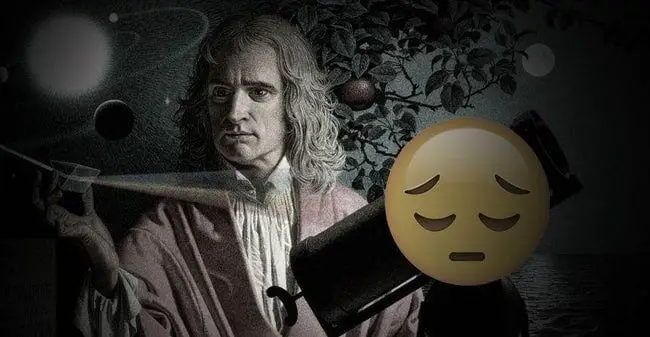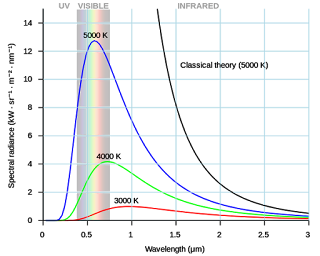What Is Modern Physics?
Modern physics means physics discovered after 1900 i.e Twentieth-century physics (and of course 21st century too). Our understanding of the physical world was restructured in the 20th century i.e “The Era Of Modern Physics”.
Well, frankly speaking, physics has no certain date or place of birth. Physics based on what we have known before 1900 i.e Newton’s law, Kepler’s law, Maxwell’s Equations, Classical Thermodynamics, etc is known as Classical Physics.
The concepts of modern physics are solely based on the two major breakthroughs of the early twentieth century. In today’s world, these two pillars of modern physics are known as Einstein’s theory of relativity and Max Planck’s quantum theory.
History Of Modern Physics
Well, as far as physics is concerned, there is a consensus that something very important happened in the 17th century. However, the history of modern physics goes deep down the valley of the time cycle which we cannot compel for.
Recommended, Aristotelian Universe – Let’s Go Back In Time
No doubt, Archimedes was the first physicist who used experimental methods. I mean, he was such a good one that even Galileo called him “The Most Divine Archimedes”.
Einstein’s View
But for Einstein himself, it was galileo who invented something profoundly new that prompted Einstein to title him “Father Of Modern Physics”. Here is einstein’s view about galileo
Pure logical thinking cannot yield us any knowledge of the empirical world. All knowledge of reality starts from experience and ends in it. Propositions arrived at by purely logical means are completely empty as regards reality. Because Galileo saw this, and particularly because he drummed it into the scientific world. He is the father of modern physics — indeed, of modern science altogether.
— Albert Einstein, “On The Method Of Theoretical Physics”, In essays in science (Dover,2009[1934]).
Galileo’s View
In fact, Galileo was the first one to discover the fundamental law of modern physics i.e “the law of free fall” (which eventually contradicted the Aristotelean View). Here is a summary of Galileo’s View:
The Scripture and Nature both derive from God, the Scripture as His dictation, the Nature as the obedient executrix of God’s commands. The aim of the Scripture is to persuade humans of those propositions which are necessary for their service to God and salvation. To adapt to the understanding of unlearned people, the Scripture speaks many things which differ from the bare meaning of words. and it would be blasphemy to accept them literally by attributing to God’s hands, human feelings like anger, regret, and forgetfulness.
Nature, on the other hand, never transgresses the laws imposed upon her. and it does not care a whit whether her abstruse reasons and modes of operation are understandable to humans. God has furnished us with senses, language, and intellect not to bypass their use and give us by other means the information we can obtain with them. Therefore, whatever sensory experience and necessary demonstrations prove to us concerning natural phenomena it should not be questioned on account of Scripture’s words which appear to have a different meaning. This is especially so for the phenomena about which we can read only very few words. The Scripture does not contain even the names of all the planets, and so it was not written to teach us astronomy.
— Galileo Galilei Letter to Benedetto Castelli (1613) and Galileo Galilei, Letter to Madame Christina of Lorraine, Grand Duchess of Tuscany concerning the use of Biblical quotation in Matters of Science (1615).
Keys Ideas Of Modern Physics As They Developed Historically
Modern physics of the previous century focused on the phenomenon that was so far beyond the scope of the ordinary experience.
Classical theories of Newton and his contemporaries could hardly be blamed. I mean, smaller velocities and larger distances are usually the realms of classical physics.
On the other hand, modern physics however often involves very extreme conditions. I mean, quantum effects that involve distances comparable to subatomic levels ( roughly 10–9 m).
On the other hand, relativistic effects typically involve distances comparable to the speed of light (roughly 10–8 m/s).
In general, one can say that both of the two pillars of modern physics affect everything across all scales, from programmable microchips to the theory of black holes.
Although, these effects can be very small to be seen or visualized by our naked eyes in our day-to-day life. In other words, modern physics basically looks at the biggest as well as the smallest moving things in the universe.
Moreover, there is a consensus going on for the merger of the two pillars of modern physics into a single entity. Meaning, a quest has been going on for so long i.e known as the “theory of everything” or “unified theory of everything”.
In case if you don’t know, even Einstein wanted to have a single theory of everything.
Einstein’s Theory Of Relativity
Well, everyone knows that it was Albert Einstein who developed the concept of relativity. On the other hand, everyone should also know that the concept of relativity was not introduced by Einstein himself.
I mean, centuries before Einstein’s timeline, the concept of relativity was introduced. Well, if you don’t know, Galileo was the first one to introduce the concept of “reference frames.
Although, the term wasn’t coined before the 19th century. Yet, everyone was well aware of the phenomenon known to be “Galileo Ships”.
Albert Einstein simply refined galileo’s idea in his first published paper in 1905 as Albert einstein’s Annus Mirabilis Papers. In today’s world, it is known as the “special theory of relativity”. It postulates:
- The laws of physics are the same in all inertial frames.
- The speed of light in a vacuum is constant and is the same as observed from all inertial frames.
Above mentioned two laws are known as the principle of relativity.
Einstein in his 1905 paper not only explained the special theory of relativity but also talked about Brownian motion, mass-energy equivalence, and, of course, the photoelectric effect.
The photon theory explained by Albert Einstein later paved the way for the creation of quantum theory coined by no other than Max Planck.
Einstein’s theory of relativity is principally the summarization of two aspects of the relativistic world i.e the special and general theory of relativity.
The special theory of relativity deals with all the states of uniformly accelerated motion.
The General Theory Of Relativity
Further by 1915, Einstein published another earth-shattering paper in which he was able to generalize all the effects of gravity.
Meaning all the states of motion including the uniform as well as non-uniformly accelerated motion. This 1915 paper was later coined as “the general theory of relativity”.

The general theory of relativity postulates:
- Local physics is always governed by the special theory of relativity.
- There is no way for an observer to distinguish between gravity and acceleration and that is known as the “Equivalence Principle”.
Well, in general relativity, Einstein introduced a totally new concept. The curvature of space-time explained the gravitational effects at every point in space.
He demonstrated equivalence between the inertial force of acceleration and the force of gravity. And with that, he concluded that the space is curved (wrapped) and finite in size.
Hence, giving us phenomena such as time dilation, length contraction, gravitational lensing, black holes, etc.
Bye-Bye Newtonian World

The speed of light is fixed as demonstrated by Einstein. Therefore, not relative to the movement of the observer. This was simply impossible under the world of Newtonian mechanics.
In the Newtonian view, absolute motion exists. While, in the Einsteinian view, all the laws of physics depend only on relative motion. Thus, absolute motion doesn’t exist.
In fact, the concept of space-time (general relativity) completely replaced newton’s laws of gravitation from the heart of all physicists.
Later, with the discovery of neutron stars and observation of gravitational waves, Einstein’s General Relativity also became a reality.
Max Planck’s Quantum Theory
As I said above, there are two pillars of modern physics i.e theory of relativity and quantum theory. Now let us go ahead and discuss what is quantum theory….!!!!
Well, at the end of the 19th century, there came a time when the classical theory wasn’t able to explain some practical observations. The phenomenon like the distribution of electromagnetic radiation emitted from the black body or simply black body radiation.

I mean, the performed experiments demonstrated that at a shorter wavelength toward the ultraviolet end of the spectrum, energy approaches zero.
Check out, Wave-Particle Duality – Physical Reality Of Quantum Physics
On the other hand, classical theory predicted that energy should become infinite. This bizarre contradiction is known as Rayleigh-Jeans Catastrophe or Ultraviolet Catastrophe.
This directly contradicted the principles of conservation of energy. That is where physicists started to believe that a new model for the explanation of black bodies should be discovered.
Recommended, Top 6 Game-Changing Facts About Quantum Physics You Can’t-Miss
On the other hand, Max Planck was having a different perspective on electromagnetic radiations. He was developing a formula of his own for the explanation of black body radiation. In 1900, Planck made some strange assumptions. He proposed that,
the electromagnetic radiation can only be emitted or absorbed in discrete packets known as quanta
Well, at that time, everyone thought that Planck’s quantization of energy is just mathematical fiction. And, there came Albert einstein who paved the way for the creation of quantum theory.
Einstein’s Photoelectric Effect
At the end of the 19th century, the whole physical world was bending towards the wave theory of light. Simply because newton’s classical theory of light or Corpuscular theory of light was unable to explain blackbody radiation.
In 1905, in his world’s most celebrated scientific papers, he proposed the photoelectric effect. He states that
when a light ray is spreading from a point, the energy is not produced continoulsy over increasing space. rather, it consists of a finite no of “energy quanta” that are localized in points in space, moving without dividing. it can be absorbed or generated only as a whole.
This statement has been the most remarkable statement ever written by a physicist of the 20th century. Later, this energy quanta came to be known as Photons.
Therefore, I can say that with Einstein’s help, quantum theory became reality.
Here is a list of things that need the quantum theory to work
- Ultra-precise clocks
- Super-powerful computers
- Improved microscopes
- Uncrackable codes, etc
At last, I will leave you with a quote by Max Planck regarding quantum theory.
I regard consciouness as fundamental. I regard matter as a derivative from consciouness. Everything that we talk about, everything that we regard as existing, postulates consciouness.
That’s it for this post. If you like this article, share it if you like it, like it if you share it. You can also find us on Mix, Twitter, Pinterest, and Facebook.

You made various fine points there. I did a search on the subject matter and found most people will go along with your blog.
Hello Kawa, Thank you for your feedback. Keep visiting us!!!